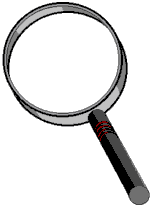Curriculum Connectionsin The Oil Spill Mystery Barb:
As far as curriculum involvement in the Mystery Writing, it kinda went
like this:
Barb:
As far as curriculum involvement in the Mystery Writing, it kinda went
like this:
1. Science --- We had just finished the Recycling Unit in Science and had discussed oil spills, so when that piece came into the mystery, we had another reason to further our online research for facts about them. Plus the children already had the interest in the subject, which may have guided their thoughts in writing the mystery. 2.As part of the Language Arts linking in that Science unit, we read a book about Chessie, the imaginary sea monster that complains about the trash in the Chesapeake Bay. Of course, this character inspired our own character of Chessie. (More about the Language Arts outcomes later). 3. This subject is also discussed in the next Science unit called "Chemical & Physical Changes". In that unit, we experiment with how oil floats on top of water and did an experiment to see how oil can be removed without disturbing the water, etc (wildlife). 4. Also, in the "Chemical....Change" Unit is an experiment on doing "invisible" writing using lemon juice and the heat from a lamp. Also using Sodium carbonate and phynelthalene(spelling?). We haven't fit that into the mystery yet, but it ties in with the "elements of mystery" that we worked with in Integrated Language Arts. 5. Our Language Arts outcomes involve studying the elements of the mystery genre. So we spent several Language Arts whole group times discussing and reading about the "History of Mystery", and the "elements" of mystery. 6. And we can't forget one of the real benefits of working with John online. Frequently, students of this age, write down ideas very quickly, but do not build background or give details. While working with John, he kept encouraging them and asking them for details. He could say to them -- "I am not familiar with what you are talking about, tell me some more ideas about..." He was able to ask questions, to get them thinking about more details to add especially about describing Chessie, and the setting of Havre de Grace (where the mystery started out), and many other pieces. The details can be viewed in our logs, some of which are posted on: http://www.kidlink.org/KIDPROJ/Kidwriters/Mystery/Maryland/WritMys.htm 7. Meanwhile, while all this writing and discussing was going on, our Social Studies curriculum was progressing through Maryland History and leading to our field trip to Annapolis which takes place this week. So as the children learned about Annapolis, it's location, and importance in History, they decided that Chessie could come to Annapolis easier than to Havre de Grace. So the setting of the story was amended to occur in Annapolis. Watch for more descriptive details to be added after our field trip. 8. Along with studying Maryland and the Chesapeake Bay, we were reading "Misty" by Marguarite Henry. This book uses an abundance of figurative language and dialect. Watch our mystery to see if we add some similes and metaphors, foreshadowing, and flashback as we write. Other outcomes we have worked on in small groups while reading this has been to summarize what we read, and ask higher level thinking skills , interpreting and discussing dialect, and predicting. 9. While discussing the idea with John about having an oil spill occurring as the story is happening, we discussed the idea of having it near a wildlife preserve to make it more important to find the formula. Naturally, the Assateague Island preserve came to the forefront of our minds. 10. We are also reading as a literature book "The Secret of Heron Creek". It is a story about two boys who save Chessie from some villains. Hopefully, this book will inspire us add more to our descriptions of Chessie. 11. As we were writing the story, we had to keep asking ourselves some Math challenges such as "How long will it take for Chessie to swim down the bay - is it possible for her to swim across the ocean? How long will it take her?" "Can John's father get to Annapolis before John's bookbag floats away at lunchtime?". This, in combination with reading the "Math curses" earlier in the year, gave us the idea to tie in Math problems with the story. These are still in the process of being edited by others before being posted. 12. As we were researching facts to back up our story, we talked about how to credit our sources , so we have also been discussing how to create bibliography entries. 13. The Art teacher, in the meantime, has been working with the illustrators to create the scenery. So she has managed to hit some of her curricular goals. I'll have to ask her which ones in particular. 14. And of course, working with Hanne, and locating her country on the map, and now South Africa, and all the people who chatted with us, has stretched our global awareness, map skills, and awareness of time zones. 15. And throughout the whole project, we have had to fine tune our collaboration . 16. We utilized our "Talents Unlimited" skills (higher level skills of productive thinking, deciding, planning, evaluating, and communicating). WHEW!! I didn't realize we accomplished all this !!!! Measurement of our progress???? How does it tie in with testing? Especially MSPAP in our state? That's basis for another whole discussion....... But I am looking forward to hearing the ideas of this esteemed group. And it is a necessary discussion...as it is the education fields yardstick for success........ Time to call it a night .....wonderful dreams everyone!!! (and good morning to others of you...:-))
|